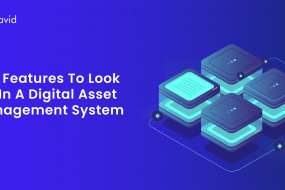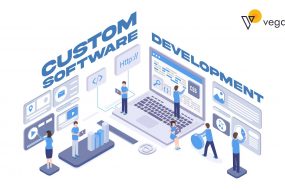
Initiatives for digital transformation are experiencing significant changes in public services all across the world. Governments seek to enhance the efficacy, efficiency, and user experience of services for residents by using technology like cloud, AI, automation, data analytics, and mobile.
The influence of digital transformation on critical aspects of public services, including citizen involvement, service delivery, decision-making, operations, and even public safety, will be examined in this blog article.
We’ll talk about the potential advantages of technological progress as well as the dangers to watch out for to get outcomes that genuinely enhance people’s lives. Initiatives to modernize and digitize administrative infrastructure are already shaping the future of public services.
Importance of Digital Transformation for Public Services
Digital For government organizations and public services to increase effectiveness, efficiency, and citizen experience, digital transformation is becoming increasingly crucial. The following are some advantages of digital transformation for public services:
- Increased citizen access to services. Online public services are now easily accessible to more individuals, anytime, anywhere. Physical obstacles are lowered, and service coverage is increased.
- Greater ease of use thanks to internet resources. Through digital portals and smartphone applications, citizens may manage the majority of their demands with public institutions without physically visiting offices. This helps you save time and effort.
- Increased output thanks to automation. Technology-enabled automation of mundane chores and procedures frees up government employees’ time to concentrate on more important and value-adding jobs.
- Better services that are personalized utilizing data. Government organizations may deliver more individualized and targeted services by analyzing citizen data.
- More transparency is made possible by open data. More openly available government data online may increase transparency, produce new ideas, and promote innovation.
Digital transformation makes it possible for public services to be run in a more contemporary, effective, and citizen-centric manner, enhancing accessibility, comfort, productivity, personalization, transparency, and cost-effectiveness. Both organizations and the citizens they serve gain from this.
Digital Transformation Initiatives in Government
Governments all around the globe are implementing a variety of digital transformation efforts to enhance citizen experience, governance, and public services. Creating centralized digital citizen service portals and mobile applications to serve as a single point of entry for all government services is one example of these approaches. Citizens can locate what they need more easily as a result of the consolidation of disparate information.
- Moving government services and applications to the cloud to increase data security while simultaneously improving flexibility, scalability, and cost-effectiveness.
- Implementing automation technologies like AI, machine learning, and RPA to improve operational efficiency, streamline processes and reduce routine work. This frees up employees for higher-value tasks.
- Leveraging data analytics to gain insights from government data and citizens’ service usage patterns. This helps allocate resources more effectively, identify fraud, and anticipate demand.
- Launching open data initiatives to publish government data in accessible formats and platforms. This can fuel research, applications, and solutions by third parties for citizen benefit.
By implementing initiatives like these, governments aim to reform public service delivery, enhance accountability, reduce costs, and better meet the needs of citizens through technology-enabled transformation.
Enhancing Citizen-Centric Services
Providing citizen-centric public services has become a top priority for governments undergoing digital transformation. Citizen-centricity means designing services around people’s needs and preferences rather than bureaucratic structures. Some ways governments can enhance citizen-centricity through digital initiatives:
- Engage citizens directly to understand their priorities, pain points, and service expectations. Use surveys, focus groups, and feedback mechanisms.
- Consolidate services into an integrated citizen portal that is straightforward to navigate for different user groups. Streamline application processes.
- Offer multiple access channels beyond websites like apps, SMS, chatbots, and call centers to meet citizens where they are.
- Personalize services by recognizing and remembering individual citizens. Pre-fill forms, and provide customized recommendations and reminders.
- Move from a “push” to a “pull” approach that empowers citizens to access information and services on demand. Enable self-service options.
By putting citizens at the center of digital initiatives, governments can design more accessible, convenient, and personalized services that truly meet peoples’ needs. This helps rebuild trust, boost satisfaction, and unlock the full value of digital transformation for the public good.
Data-Driven Decision Making
Data and analytics are playing an increasingly important role in helping governments make more effective and transparent decisions. Some ways data can power decision-making in the public sector:
- Collect data systematically from government operations, service delivery, and citizens. Combine data from multiple sources to get a holistic view.
- Analyze data to identify patterns, predict outcomes, assess risks and uncover opportunities for improvement. Use techniques like data visualization and data storytelling.
- Create dashboards and performance metrics to track important indices for programs and departments of the government. Follow goals’ progress in almost real-time.
- Create data governance rules and practices to guarantee the accuracy, integrity, privacy, and ethical use of data. Obtain the consent of the public before using their data.
- Increase the government’s knowledge and proficiency with data through training initiatives and the employment of data analysts. Create a culture that is “data-driven”.
Governments may make better decisions that are supported by data, outcome-focused, and sensitive to citizens’ changing demands by combining the power of data and human judgment. Data-driven decision-making also improves governance’s openness and accountability.
Improving Government Efficiency
Improving the efficiency of government operations is a key goal of digital transformation initiatives. Some ways technology can help governments work more cost-effectively:
- Automate routine tasks and processes through technologies like robotic process automation (RPA) and artificial intelligence (AI). This reduces human labor costs and errors.
- Optimize resource allocation and budget planning using data analytics and predictive models. Make sure funds are spent where they can have the greatest impact.
- Combine online service delivery with process re-engineering to remove redundant steps, approvals, and handoffs. Streamline workflows end-to-end.
- Consolidate IT infrastructure through cloud computing. This offers flexibility, scalability, and pay-for-use pricing which can significantly lower costs.
- Advance from e-government to m-government by developing mobile-optimized citizen services. Mobile channels are often cheaper to set up and maintain.
By leveraging technology, automating work, and optimizing processes, governments can significantly improve operational efficiency, reallocate resources to higher priorities and achieve more with limited budgets – helping enhance the value they deliver to citizens.
Digital Transformation and Public Safety
Modern communication tools allow public safety agencies to connect with the community faster and more effectively through mobile apps, social media, and real-time alerts.
Predictive analytics and AI have the potential to identify crime patterns, at-risk individuals and optimize resource allocation – but only if used responsibly with adequate oversight to prevent biased outcomes.
Body cameras and vehicle dashcams provide objective records of incidents but policies around footage access, privacy, and data storage are needed to protect civil liberties.
Drones and robots are being tested for dangerous operations like search and rescue, firefighting, and hazardous material assessment but policies for their appropriate use must be developed.
Internet of Things sensors that detect threats in real-time are being deployed in public spaces to provide alerts – but the security and privacy of sensor data must be ensured.
Cloud computing and data analytics enable more resilience, scalability, and data sharing – but adequate privacy protections for individuals’ information must be in place.
Overcoming Challenges in Digital Transformation
To overcome a lack of a clear strategy, organizations must develop a well-defined transformation plan aligned with business goals. This provides focus and direction.
To overcome technology gaps, organizations must invest in the right technologies, infrastructure, and skills training. This may require significant upfront resources but is essential.
To overcome resistance to change, leaders must communicate openly with employees about the vision and benefits of transformation. Gain buy-in through participation and transparency.
For data and security issues, organizations must implement strong policies and governance to manage growing data risks from new technologies.
To overcome siloed structures, organizations may need to transition to more agile, cross-functional teams that promote information sharing and collaboration.
Budget constraints, organizations must prioritize the most important transformation initiatives and find ways to fund them through reallocation or cost reduction elsewhere.
Building Digital Skills in Government Workforce
The following steps should be taken by the public sector to improve the digital skills of the government workforce-
- Provide training and reskilling programs – Governments must invest in training programs that teach workers skills in areas like data analytics, AI, cloud computing, cybersecurity, and more. This helps bridge existing digital skills gaps.
- Partner with educational institutions – Governments can partner with schools, colleges, boot camps, and universities to develop customized learning programs for their workforce. This leverages external expertise.
- Hire specialists in digital fields – Since training takes time, governments may need to directly hire people with advanced data science, software development, and other digital skills to accelerate transformation.
- Implement internship and apprenticeship programs – Governments can bring in interns and apprentices to work alongside current employees while gaining digital skills on the job. This helps develop talent pipelines.
- Support professional certifications – Governments can cover costs for workers to obtain relevant certifications in fields like IT, data analytics, and project management. This validates skills and competencies.
Anticipating the Future: Emerging Trends
Some of the most exciting emerging trends for digital transformation in government are-
- Scenario Planning – Creating narratives of how the future may unfold based on different assumptions can help organizations explore possible scenarios and prepare for multiple eventualities.
- Forecasting – Using statistical methods and historical data, organizations can generate predictions of how trends may change over time. However, disruptions may render some forecasts useless.
- Monitoring Emerging Technologies – By tracking developments in fields like AI, blockchain, IoT, and biotech, organizations can identify which technologies are poised to have significant impacts in the coming years.
- Horizon Scanning – Constantly searching for weak signals of potential issues, threats and opportunities on the distant horizon allows organizations to identify emerging trends earlier.
A multitude of approaches can be used to anticipate future trends, from quantitative methods to textual analysis to simple conversations. The key is utilizing a variety of tools, understanding their limitations, and combining multiple sources of information to generate useful visions of what’s to come and how your organization may be impacted.
Conclusion
While digital transformation promises great benefits for public services, it also poses challenges that governments must navigate to ensure technology serves the public good. Key priorities include building workforces with the skills to harness new technologies.
Developing ethical use policies and protections for citizens’ data, engaging stakeholders to gain input and support, utilizing technologies to better engage and include underserved groups, and continually evaluating outcomes to measure the real impacts of transformation efforts.
With a human-centric approach and a vision for how technology can best serve the needs of constituents, governments stand to transform public services in ways that truly improve people’s lives. Through cautious experimentation, community input, and willingness to course-correct, emerging technologies hold tremendous potential to revitalize the public sector and better fulfill its missions.











